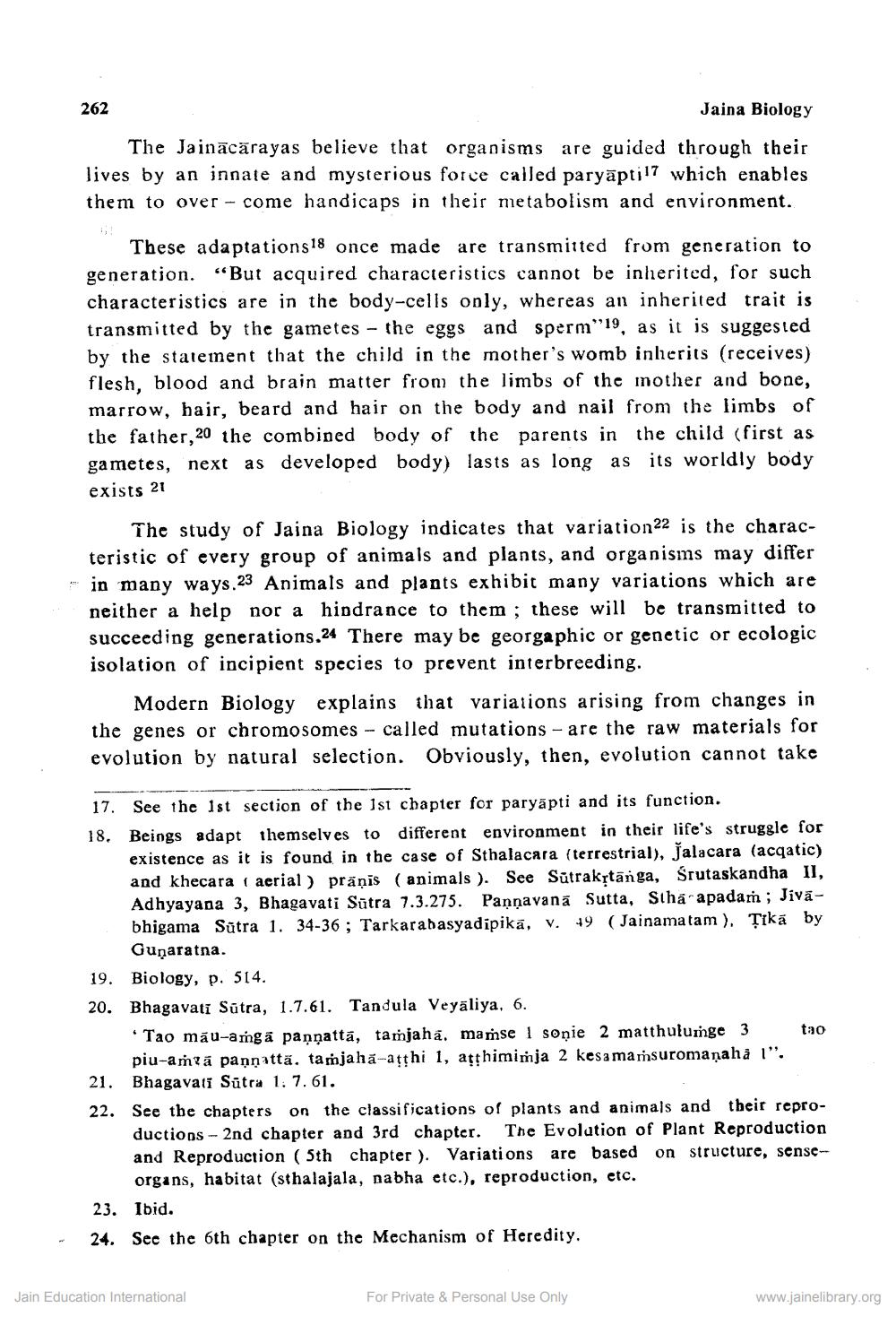________________
262
Jaina Biology
Ti
The Jainācārayas believe that organisms are guided through their lives by an innate and mysterious force called paryāpti17 which enables them to over - come handicaps in their metabolism and environment.
These adaptations18 once made are transmitted from generation to generation. “But acquired characteristics cannot be inherited, for such characteristics are in the body-cells only, whereas an inherited trait is transmitted by the gametes - the eggs and sperm"19, as it is suggested by the statement that the child in the mother's womb inherits (receives) flesh, blood and brain matter from the limbs of the mother and bone, marrow, hair, beard and hair on the body and nail from the limbs of the father, 20 the combined body of the parents in the child (first as gametes, next as developed body) lasts as long as its worldly body exists 21
The study of Jaina Biology indicates that variation 22 is the characteristic of every group of animals and plants, and organisms may differ *in many ways.23 Animals and plants exhibit many variations which are
neither a help nor a hindrance to them; these will be transmitted to succeeding generations,24 There may be georgaphic or genetic or ecologic isolation of incipient species to prevent interbreeding.
Modern Biology explains that variations arising from changes in the genes or chromosomes - called mutations - are the raw materials for evolution by natural selection. Obviously, then, evolution cannot take
17. See the 1st section of the 1st chapter for paryapti and its function. 18. Beings adapt themselves to different environment in their life's struggle for
existence as it is found in the case of Sthalacara (terrestrial), Jalacara (acqatic) and khecara ( aerial) pränis (animals ). See Sūtraktānga, Srutaskandha II, Adhyayana 3, Bhagavati Sūtra 7.3.275. Pannavaná Sutta, Stha apadam ; Jivābhigama Sūtra 1. 34-36 ; Tarkarabasyadipika, v. 19 (Jainamatam ). Tikā by
Gunaratna. 19. Biology, p. 514. 20. Bhagavati Sūtra, 1.7.61. Tandula Veyaliya, 6.
"Tao mãu-amgā paņņattā, tamjaha. mamsel sonie 2 matthulumge 3 tao
piu-ama pannatta, tamjaha-atthi 1, atthimimja 2 kesa mamsuromanaha 1". 21. Bhagavati Sūtra 1. 7. 61. 22. See the chapters on the classifications of plants and animals and their repro
ductions - 2nd chapter and 3rd chapter. The Evolution of Plant Reproduction and Reproduction ( 5th chapter ). Variations are based on structure, sense
organs, habitat (sthalajala, nabha etc.), reproduction, etc. 23. Ibid. 24. See the 6th chapter on the Mechanism of Heredity.
-
Jain Education International
For Private & Personal Use Only
www.jainelibrary.org




